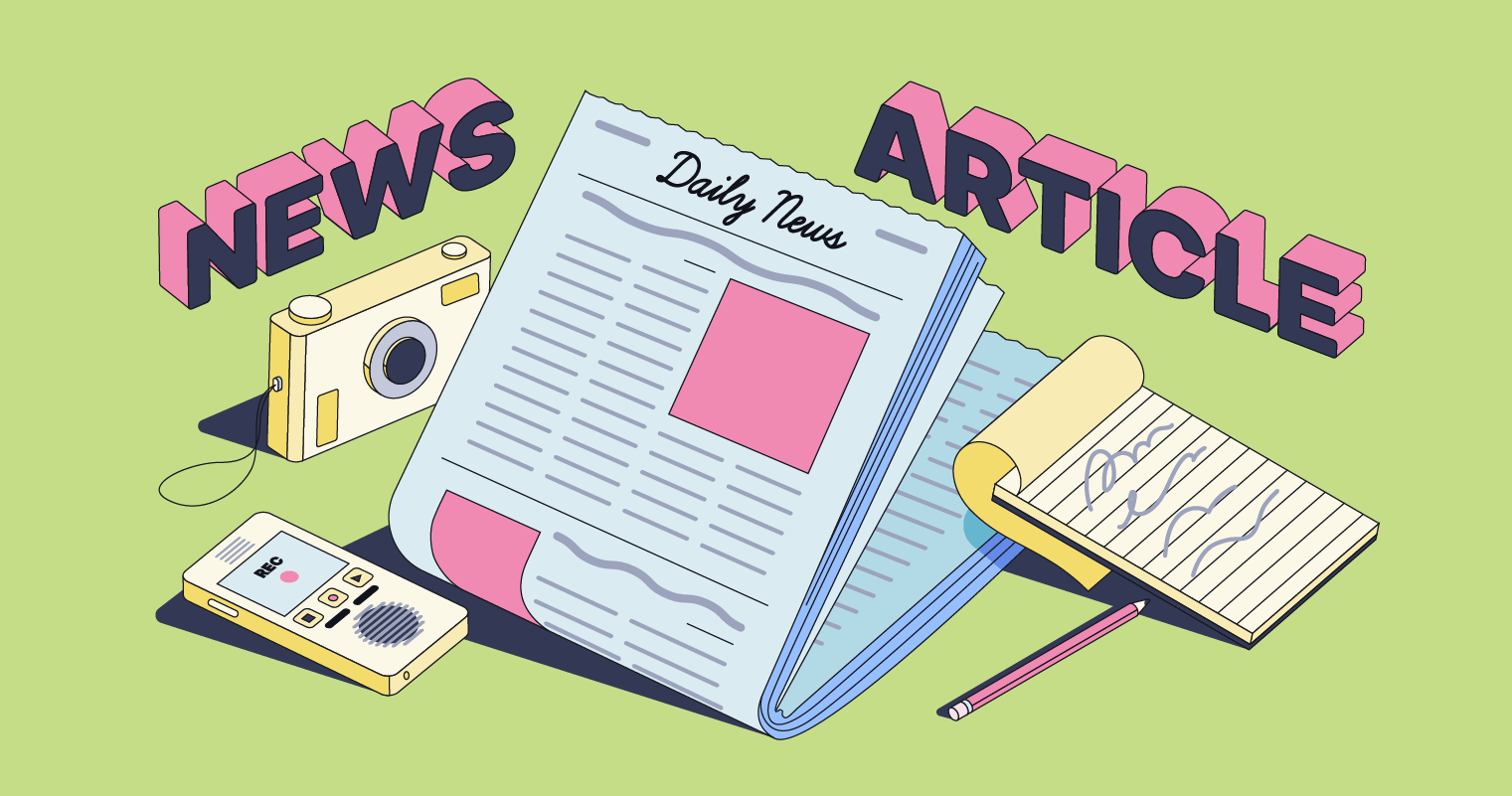The Buzz on News Articles
The Buzz on News Articles
Blog Article
Getting My News Articles To Work
Table of ContentsAll about News ArticlesThe Main Principles Of News Articles Our News Articles PDFsNews Articles Can Be Fun For EveryoneThe Single Strategy To Use For News Articles
Excellent understanding of various topics gives trainees an affordable side over their peers. Although electronic and social media are readily obtainable, we must not neglect just how crucial it is to read the newspapers. Parents need to attempt and instill the behavior of checking out a newspaper as a day-to-day routine to proceed the heritage of the adored print tool.Newspaper article also consist of at least among the following vital features about the designated target market: closeness, prominence, timeliness, human passion, curiosity, or consequence. The relevant term journalese is often made use of, generally pejoratively, to describe news-style writing. Another is headlinese. Newspapers normally stick to an expository writing design.
Within these limitations, information stories also aim to be comprehensive. However, other aspects are entailed, some stylistic and some stemmed from the media form. Amongst the bigger and a lot more highly regarded papers, fairness and balance is a significant variable in presenting info. Discourse is normally constrained to a different section, though each paper might have a various overall slant.
Newspapers with a worldwide audience, for example, have a tendency to use a much more formal design of creating. News Articles.; usual style guides consist of the and the US Information Style Publication.
Rumored Buzz on News Articles
As a regulation, journalists will certainly not utilize a lengthy word when a brief one will do. They use subject-verb-object building and vibrant, active prose (see Grammar). They use anecdotes, instances and allegories, and they rarely depend on generalizations or abstract concepts. News authors try to stay clear of utilizing the same word much more than as soon as in a paragraph (often called an "resemble" or "word mirror").
Headlines often leave out the topic (e.g., "Jumps From Boat, Catches in Wheel") or verb (e.g., "Cat female lucky"). A subhead (likewise subhed, sub-headline, subheading, subtitle, deck or dek) can be either a subordinate title under the primary heading, or the heading of a subsection of the write-up. It is a heading that precedes the main message, or a group of paragraphs of the primary text.
of a write-up topic, informant, or interviewee), it is referred to as a drawn quote or pull quote. Additional signboards of any of these kinds may show up later in the article (especially on subsequent pages) to entice more reading. Journalistic internet sites sometimes make use of computer animation strategies to switch one billboard for one more (e.g.
See This Report about News Articles
Such signboards are also utilized as reminders to the write-up in various other sections of the publication or site, or as promotions for the item in various other publication or websites. News release of the Swiss government. Regular framework with title, lead paragraph (summary in vibrant), various other paragraphs (information) and contact information.

Instance of a hard-lead paragraph NASA is recommending an additional space task. The budget requests around $10 billion for the task.
The NASA statement came as the agency requested $10 billion of appropriations for the job. An "off-lead" is the second crucial front web page news of the day. The off-lead shows up either in the leading left edge, or straight listed below the lead on the right. To "hide the lead" is to start the short article with history information or details of secondary relevance to the viewers, forcing them to learn more deeply right into a short article than they need to need to in order to discover the essential factors.
Not known Details About News Articles
Usual use is that or 2 sentences each create their very own paragraph. Reporters typically describe the organization or structure of a newspaper article as an inverted pyramid. The crucial and most interesting aspects of a story are placed at click now the start, with sustaining details adhering to in order of decreasing value.
It permits individuals to discover a subject to just the deepness that their inquisitiveness takes them, and without the charge of details or nuances that they could consider unimportant, but still making that information available to more interested readers. The inverted pyramid framework additionally makes it possible for articles to be cut to any kind of approximate size during design, to fit in the space available.
Some writers begin their stories with the "1-2-3 lead", yet there are numerous kinds of lead available. A twist can refer to several things: The last tale in the information broadcast; a "happy" tale to end the program.
Longer articles, such as publication cover short articles and the pieces that lead the within sections of a newspaper, are understood as. Function stories vary from straight news in several methods. Foremost is the Get More Information absence of a straight-news lead, most of the time. As opposed to using the essence of a story up front, feature writers may try to tempt visitors in.
Indicators on News Articles You Need To Know
A feature's very first paragraphs commonly connect an intriguing minute or occasion, as in an "unscientific lead". From the details of an individual or episode, its view quickly broadens to generalizations about the story's topic.

The Editor's Toolbox: A Reference Guide for Beginners and Professionals (2001) Allan M. Siegal and William G. Connolly. The New York Times Guidebook of Design and Use: The Official Style Overview Used by the Writers and Editors of the Globe's The majority of Reliable Paper (2002) M. L. Stein, Susan Paterno, and R.
Report this page